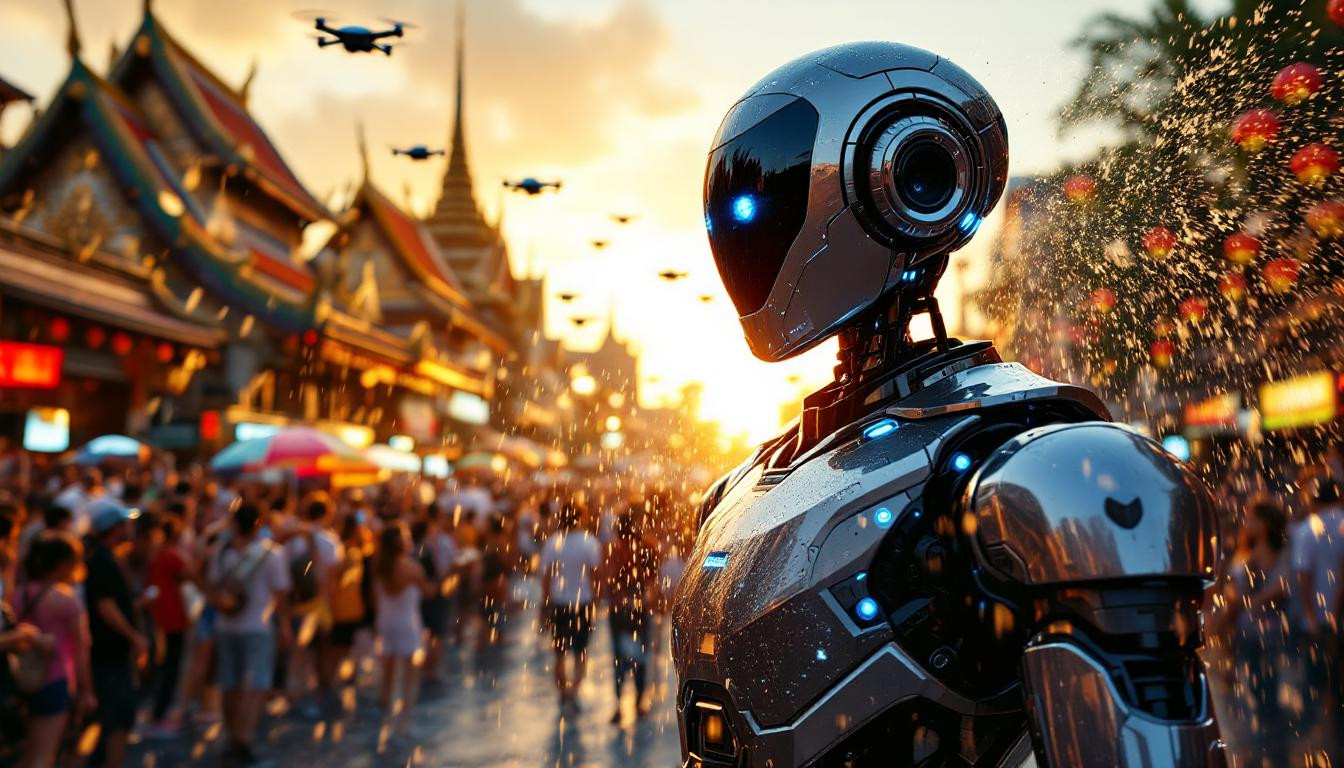Thailand just unveiled a policing innovation that feels straight out of a sci-fi movie. The AI Police Cyborg 1.0 made its debut during the 2025 Songkran festival, bringing advanced surveillance and public safety capabilities to Thailand’s most celebrated water festival. This technological marvel, nicknamed “Pol Col Nakhonpathom Plod Phai” (meaning “Nakhon Pathom is safe”), represents a significant leap forward in law enforcement technology.
The birth of Thailand’s first robotic police officer
Launched on April 13, 2025, during Thailand’s famous water festival celebrations, this AI-powered robot is the result of collaboration between Provincial Police Region 7, Nakhon Pathom Provincial Police, and Nakhon Pathom Municipality. The robotic officer was deployed in Nakhon Pathom province, specifically along Tonson Road in Muang district, where festival crowds traditionally gather in large numbers.
Advanced surveillance capabilities that outshine human limitations
What makes this robot truly remarkable is its comprehensive surveillance abilities. Equipped with smart 360-degree AI cameras, the Cyborg can monitor its surroundings with unprecedented precision. Dr. Somchai Theerathada, AI Technology Director at Thailand’s National Security Institute, explains: “This robot represents the perfect integration of artificial intelligence and physical security. Its surveillance capabilities exceed what any human officer could achieve in crowded environments.”
The robot can spot hidden weapons while ignoring water guns during festivals – a crucial distinction during water-centric celebrations like Songkran.
Facial recognition and behavior detection that transforms policing
One of the Cyborg’s most powerful features is its advanced facial recognition system that can identify and track individuals throughout large crowds. The robot scans faces and compares them against databases of wanted persons, immediately alerting human officers when a match is found.
Beyond faces, the AI Police Cyborg 1.0 can detect potentially suspicious behaviors like:
- Fighting or physical altercations
- Unusually aggressive movements
- Possession of potential weapons
- Suspicious loitering patterns
The technical marvel behind the machine
The robot integrates seamlessly with existing security infrastructure, connecting to CCTV networks and drone surveillance systems for comprehensive coverage. Its wheeled base allows it to patrol flat surfaces efficiently, though its mobility remains somewhat limited compared to human officers.
Security expert Lisa Chen from the International Association of Robotics in Law Enforcement notes: “What’s fascinating about Thailand’s approach is how they’ve created a system that combines AI surveillance with human oversight. This hybrid model represents the future of public safety technology.”
Addressing privacy concerns and ethical considerations
While the technology impresses, it also raises questions about surveillance and privacy. Like subtle behaviors that might reveal deception, AI surveillance can be both powerful and concerning. The robot operates under strict protocols, with human officers always nearby to make final decisions.
The future of AI in law enforcement
The AI Police Cyborg represents just the beginning of AI integration into policing. As technology costs evolve, we’ll likely see more sophisticated versions deployed globally.
Similar to how intellectual engagement benefits aging brains, these technologies continue to improve with each iteration and deployment.
What this means for global security innovation
Thailand’s AI Police Cyborg operates much like new automotive technologies – testing boundaries of what’s possible while addressing practical needs. The robot serves as both a technological demonstrator and a functional security asset.
- Deterrent effect through visible presence
- Force multiplier for human officers
- Real-time threat assessment capabilities
As we witness this remarkable blend of robotics and AI reshape public safety, one thing becomes clear: the future of policing will increasingly involve technological partnerships that extend human capabilities while maintaining the human judgment that remains essential to effective law enforcement.
